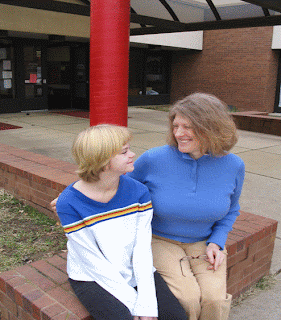First, we must praise Oklahoma Career
Tech and Oklahoma State Regents for Higher Education for the excellence in
their educational institutions. In the
real world, Oklahomans are able to reach out to a local career tech, college or
university for student and faculty expertise not only in PR, as here, but also through senior or
graduate students who are accomplished in their fields.
Next, we must thank Melynda Stone for sharing this plan with us. Tyler and Brad at Claremore’s Northeast
Technology Center contributed creative ideas for recruiting mentors.
We can adapt this strategy in our own
communities.
Marketing Objective:
recruit additional volunteer mentors
Target audiences:

1) Men
2) African Americans
3) Young Adults
4) RSU Students in need of community service
hours/RSU athletes
5) Business professionals
6) Women
7) Retired Folks
8) Hispanics
9) Church Members
10) Veterans
11) Fire Fighters and law enforcement officers
 Action Plan:
Action Plan:
1) Take advantage of all opportunities to have a
presence at community events, hand out information and take names/contact info
from interested adults.
a) Upcoming parades
b) Any festivals/events where booths/tables are
available - ex: Trunk or Treat
c) Area football games (PA announcements &
windshield fliers)
2) Get information into the hands of the general
population
a) Develop a
small hand out for drive through customers at restaurants & banks
b) Place
these handouts in waiting areas at medical offices
c) Write and
submit article(s) to area newspapers
d) Frequent Facebook
posts
3) Target RSU [college and/or career tech] students
a) Hillcat
Post article(s)
b) Posters at the library, campus housing, and
student gathering areas
c) Posts to RSU groups' Facebook pages
d) An outreach to Rogers State University (RSU)
coaches for their athletes to
volunteer
e) Develop and run an RSU Radio public service
announcement
4) Develop a "Wanted"
poster campaign (Some will rotate). Placement of posters at:
 a) Bank
lobby possibilities
a) Bank
lobby possibilities
1.
RCB Main
2. RCB FC
3. RCB Inola
4. RCB Catoosa
5. BancFirst Main
6. BancFirst Ne-Mar
7. BancFirst Blue Starr
8. IBC
9. TTCU
10. Bank of Commerce Sequoyah
 11.
Grand Bank
11.
Grand Bank
12.
Chelsea's Bank
13.
Bank of the Lakes Catoosa
14. Bank of the Lakes Oologah
15. Bank of America Catoosa
16.
Bank of Oklahoma Catoosa
17. Bank of Chelsea
b)
Larger business break areas (to reach employees) Possibilities:
1. Baker Hughes-Centrilift
2. AXH
3. Tarby
c)
Larger business lobbies (to reach general public visiting the business or
building)
1.
Claremore Hillcrest Hospital
2. Rogers County Court House
 d)
Restaurants
d)
Restaurants
1. Chilis
2. Asianna
3. Carl's Coney Island
4. Eggberts
5. Hammett House
6. Napolis
7. Mazzios
8. Pizza Hut
9. Rib Crib
10.
Pink House
Melynda’s addition to her team: Would there be any way to develop a
"Sticky Note" type product that could be on or near each poster. An interested person would be able to peel one off that has our phone number
and web address if they were interested and wanted to follow up? If so, these
could also be handouts at booths, windshields, etc. RCB, which has its own
in-house printing, made some to promote their online banking ap, and they are
noticeable at every teller station.
5) Although the campaign can
continue indefinitely, the culmination should be during January Mentoring
Month. We could make our existing monthly event the focus (January 18th)
and promote it heavily to all our existing mentors (mail a postcard invitation
as well as our usual email reminders), invite the Mayor to proclaim "Mentoring
Day" in Claremore, and figure out some ways to invite people from the
general public who are thinking about volunteering. This event could be
photographed and publicized afterwards as an additional way to get the message
out that more mentors are needed. The theme for 2013 Mentoring Month is
"Mentoring Works!"
We
might add that MENTOR is keeping the Mentoring Works! as a standard logo.
Melynda, who contributed mentoring photos
representative of some of the targets mentioned in the above campaign, has education and experience in public relations and business.
Shared by Melynda
Stone, Executive Director, Volunteers for Youth...
...because
they're worth it!
Email 10-4-12













